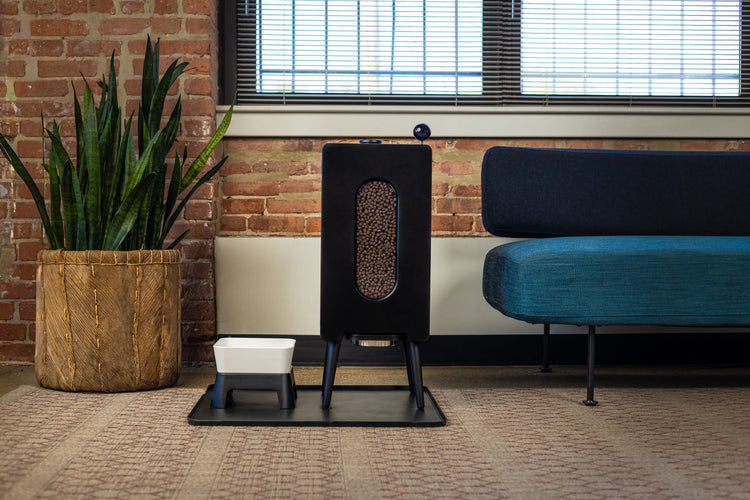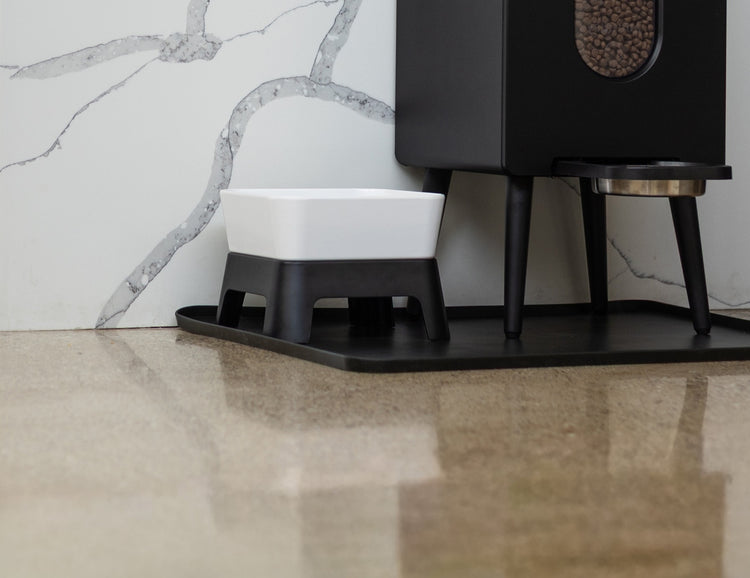How Much Chicken and Rice for Dog by Weight: A Comprehensive Guide for Pet Owners
- Houndsy
Table of Contents
- Introduction
- Understanding the Benefits of Chicken and Rice
- How Much Chicken and Rice to Feed Your Dog by Weight
- Preparing Chicken and Rice for Your Dog
- When to Transition Off Chicken and Rice
- Potential Risks of Feeding Chicken and Rice
- Conclusion
- Frequently Asked Questions
Introduction
As devoted pet parents, we often find ourselves navigating the complexities of our furry friends' diets. Did you know that approximately 15% of dogs experience adverse reactions to common allergens, making it essential to choose their meals wisely? One dietary option that has gained popularity for its simplicity and digestibility is the classic combination of chicken and rice. This versatile meal is not only easy to prepare but also provides numerous health benefits, especially for dogs with digestive issues.
In this blog post, we will explore the appropriate portion sizes of chicken and rice for dogs based on their weight, as well as the nutritional benefits of this diet. We will delve into the reasons why chicken and rice can be a suitable short-term solution for dogs suffering from stomach problems. By the end of this article, you'll have a clearer understanding of how much chicken and rice to feed your dog, ensuring they receive the nourishment they need while recovering from digestive distress.
Let’s embark on this journey together as we discover the nuances of incorporating chicken and rice into our pets' diets, ensuring their health and happiness.
Understanding the Benefits of Chicken and Rice
Nutritional Value
Chicken and rice offer a simple yet effective source of nutrition for dogs. Chicken is a high-quality protein that supports muscle growth and repair, while rice serves as a digestible carbohydrate, providing energy. This combination is particularly beneficial during recovery from gastrointestinal upset, as both ingredients are gentle on the stomach.
- Protein Source: Chicken is packed with essential amino acids that are crucial for muscle repair and overall health. It is also one of the least allergenic proteins, making it suitable for dogs with food sensitivities.
- Digestible Carbohydrates: White rice is easy to digest, making it an ideal component of a bland diet for dogs experiencing diarrhea or vomiting. It helps to bind loose stools and provides a source of quick energy.
Health Benefits
Feeding your dog chicken and rice can have several health benefits, especially in specific situations:
- Recovery from Illness: If your dog has an upset stomach, a diet of chicken and rice can help stabilize their digestive system. The blandness of these ingredients allows their gastrointestinal tract to rest.
- Weight Management: Since chicken is low in calories and high in protein, it can assist in maintaining a healthy weight for your dog, especially when combined with rice.
- Ease of Preparation: Cooking chicken and rice is straightforward and requires minimal ingredients, making it accessible for pet owners who may not have the time for complex meal preparations.
Considerations for Feeding Chicken and Rice
While chicken and rice are beneficial, it’s essential to note that this diet should not be a long-term solution. It lacks certain vitamins and minerals that are crucial for a balanced diet. Therefore, it’s best used as a short-term remedy during recovery.
How Much Chicken and Rice to Feed Your Dog by Weight
Determining the appropriate amount of chicken and rice for your dog largely depends on their weight. A common guideline for feeding is approximately 2% to 3% of your dog’s body weight in total food per day.
General Feeding Guidelines
Here’s a breakdown of how much chicken and rice to feed your dog based on their weight:
| Dog Weight (lbs) | Daily Food Amount (lbs) | Chicken Portion (lbs) | Rice Portion (lbs) |
|---|---|---|---|
| 5 | 0.1 - 0.15 | 0.03 - 0.05 | 0.07 - 0.1 |
| 10 | 0.2 - 0.3 | 0.07 - 0.1 | 0.13 - 0.2 |
| 20 | 0.4 - 0.6 | 0.13 - 0.2 | 0.27 - 0.4 |
| 30 | 0.6 - 0.9 | 0.2 - 0.3 | 0.4 - 0.6 |
| 50 | 1.0 - 1.5 | 0.3 - 0.5 | 0.7 - 1.0 |
| 70 | 1.4 - 2.1 | 0.5 - 0.7 | 0.9 - 1.4 |
Note: These amounts can be adjusted based on your dog’s activity level, age, and specific health concerns.
Ratios for Chicken and Rice
For a balanced meal, we recommend a ratio of approximately 2:1 of rice to chicken. This means that for every cup of chicken, you should provide two cups of rice. This ratio not only ensures adequate caloric intake but also helps to firm up stools in dogs experiencing diarrhea.
Preparing Chicken and Rice for Your Dog
Cooking Instructions
Preparing chicken and rice for your dog is a straightforward process:
- Select Quality Ingredients: Use boneless, skinless chicken breasts and white rice. Avoid any added seasonings, oils, or fats that could upset your dog’s stomach.
- Cooking the Chicken: Boil the chicken in water until it reaches an internal temperature of 165°F (74°C). This ensures it is safe for your dog to consume.
- Cooking the Rice: Use the broth from the cooked chicken to prepare the rice. This adds flavor and nutrients. Follow the package instructions for the rice, typically using a 1:2 ratio of rice to broth.
- Mix Together: Once both the chicken and rice are cooked, shred the chicken and mix it with the rice in the proper proportions. Allow the mixture to cool to room temperature before serving.
Storage Tips
If you prepare more than your dog can eat in one sitting, here are some storage tips:
- Refrigeration: Store leftovers in an airtight container in the refrigerator for up to three days.
- Freezing: For longer storage, freeze portions in freezer-safe containers or bags for up to three months. Thaw thoroughly before serving.
When to Transition Off Chicken and Rice
While chicken and rice can be a lifesaver during times of digestive upset, it’s important to transition back to your dog’s regular diet as soon as their condition improves. Here’s how to do it safely:
- Day 1: Mix 75% chicken and rice with 25% regular food.
- Day 2: Adjust to 50% chicken and rice and 50% regular food.
- Day 3: Move to 25% chicken and rice and 75% regular food.
- Day 4: Serve 100% regular food.
This gradual transition helps to prevent any further digestive issues and ensures your dog’s system can adjust back to their regular diet smoothly.
Potential Risks of Feeding Chicken and Rice
Short-Term Solution
Feeding chicken and rice should be a temporary measure. If your dog’s symptoms persist for more than 48 hours, or if they display additional symptoms like vomiting or lethargy, it’s crucial to consult your veterinarian. Long-term reliance on chicken and rice can lead to nutritional deficiencies, as this diet lacks essential vitamins and minerals.
Allergies and Sensitivities
While chicken is generally well-tolerated, some dogs may have sensitivities or allergies. If your dog shows signs of an allergic reaction (such as itching, gastrointestinal distress, or ear infections), discontinue feeding chicken and consult your veterinarian.
Conclusion
Incorporating chicken and rice into your dog’s diet can be a beneficial short-term remedy for digestive issues, provided you adhere to recommended portion sizes based on their weight. By understanding the nutritional value, preparing the meal correctly, and transitioning back to their regular diet, we can ensure our furry friends receive the care they need.
As pet owners, we have the power to enhance our dogs' eating experiences. If you're looking to elevate mealtime further, consider exploring our Houndsy Kibble Dispenser. This innovative product not only simplifies feeding but also adds a touch of modern design to your home. Check it out here.
Frequently Asked Questions
-
Can all dogs eat a chicken and rice diet?
- Most dogs can handle chicken and rice, but those with allergies or specific health issues should consult a veterinarian first.
-
How long should I feed my dog chicken and rice?
- It is recommended to feed chicken and rice for no more than 2-3 days. If symptoms persist, consult your veterinarian.
-
Can I use brown rice instead of white rice?
- While brown rice is more nutritious, it’s higher in fiber and can be harder to digest for some dogs, making white rice the better option during digestive distress.
-
Is it okay to add vegetables to the chicken and rice meal?
- While adding vegetables can be beneficial, it’s best to keep the initial chicken and rice meal simple to avoid further digestive upset.
-
How do I transition my dog back to regular food after a chicken and rice diet?
- Gradually mix in regular food over 3-4 days, starting with a higher ratio of chicken and rice and slowly decreasing it.
By understanding how much chicken and rice to feed our dogs by weight, we can provide them with the care and attention they deserve, promoting their health and happiness every step of the way.












